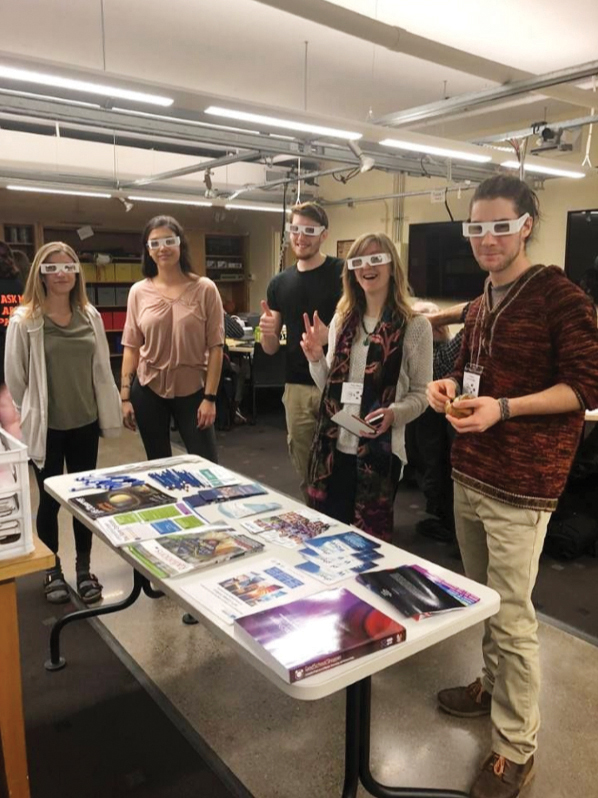A Biology Student Goes to the SPS Zone 17 Meeting
A Biology Student Goes to the SPS Zone 17 Meeting
For Riley, traveling on official physics business was nothing new, but I had no idea what to expect from this trip, many leagues away from Fairbanks. And for that matter, it was only the second time anybody from Alaska had ever gone to a zone meeting.
We arrived in the afternoon, after a long car ride across a mixed landscape of mountains and plains saturated with countless evergreens. Upon our arrival in Corvallis, we were greeted by an Earth free of snow and beginning to blossom with the essence of spring.
We entered a large, intimidating building with various twists and turns where many brilliant young minds prepared to become scientists. It was nothing like the simple Reichardt building back in Fairbanks, Alaska. This place was big. Even for someone like myself, who comes from a giant metropolis, its size was truly remarkable.
For the first event that evening, we watched a presentation by the former APS president, Dr. Laura Greene, about superconductor magnets and how they might revolutionize the technological world. She demonstrated the effects of super-chilling by pouring liquid nitrogen on the ground and we watched it boil at room temperature. After all, superconductors need to be super-chilled to work properly. It’s bewildering to discover how different branches of science such as physics and chemistry intertwine to bring us such advanced technology, a common and recurring theme we would see throughout the zone meeting.
The demonstration ended, and we met up with our Alaskan counterparts from the University of Alaska Anchorage, who had arrived earlier than us. Like me, none of them were actual physics majors, although they were pursuing degrees in STEM fields.
The keynote of the meeting, a presentation by an Italian physicist, Dr. Davide Lazzati, was a huge success. His explanation of gamma-ray bursts and his research into the many isotopes and chemical elements in the universe stretched across the furthest reaches of the galaxy. It is interesting how in some respects, we know more about the universe around us than our own planet.
The evening closed with a tour of campus from two OSU SPS members. On the tour we saw their SPS room, which was bigger than ours. We then left the physical science building and walked around the campus. We saw grand evergreen trees, historic brick buildings, and students going about their day in the warm- lit evening landscape that was the university. We quickly grabbed dinner and made our way to our rented room.
We started day 2 with a physics decathlon. For most bright minds like Riley, soon to be entering a PhD program, this was no problem. For me, with my biology background, many of the questions stumped me. However, my chemistry background helped greatly. Aside from the trivia questions, we also had to build a tower from spaghetti straw and masking tape and design an aerodynamically rigorous paper airplane.
Next, we spoke via video conference with the director of SPS and Sigma Pi Sigma, Dr. Brad Conrad, who shared lots of helpful information. We had a question-and-answer session and heard about his journey to SPS. He congratulated us on our turnout and reinvigorated us with words of encouragement, the very thing all STEM students need at the end of a stressful semester. We then proceeded to several other presentations by graduate students and alumni of OSU. We observed the many pathways in life they have taken or plan to take as well as learned about the many options available to STEM students. I think it’s fair to say that we will rule the world, eventually.
The last event of the meeting was a tour of the OSU labs, which had various applied physics projects going on within. I toured the biophysics lab. Here the scientists studied the various shapes and geometries that cancer cells can assume. The hope is to expose vulnerabilities and ultimately help treat cancer. Physics, geometry, and biology intermeshed within the same project. Amazing.
We closed the meeting by taking a photo with attendees. After saying goodbye to our new friends, we departed back to Alaska a little tired, a little wiser, reassured, and a little more informed. Not bad for an overnight trip.

